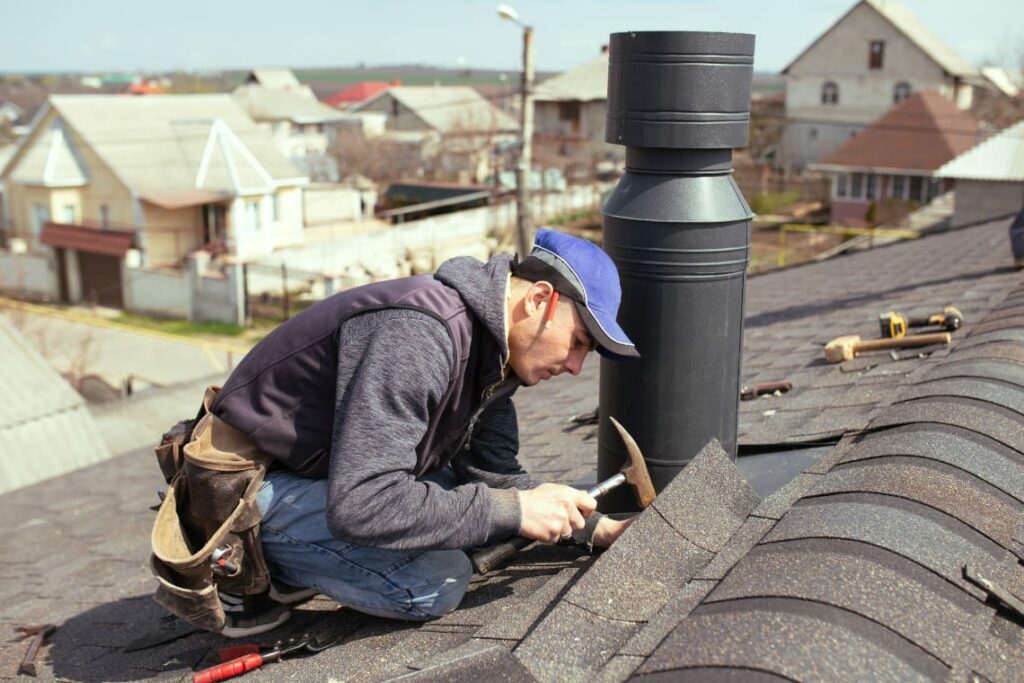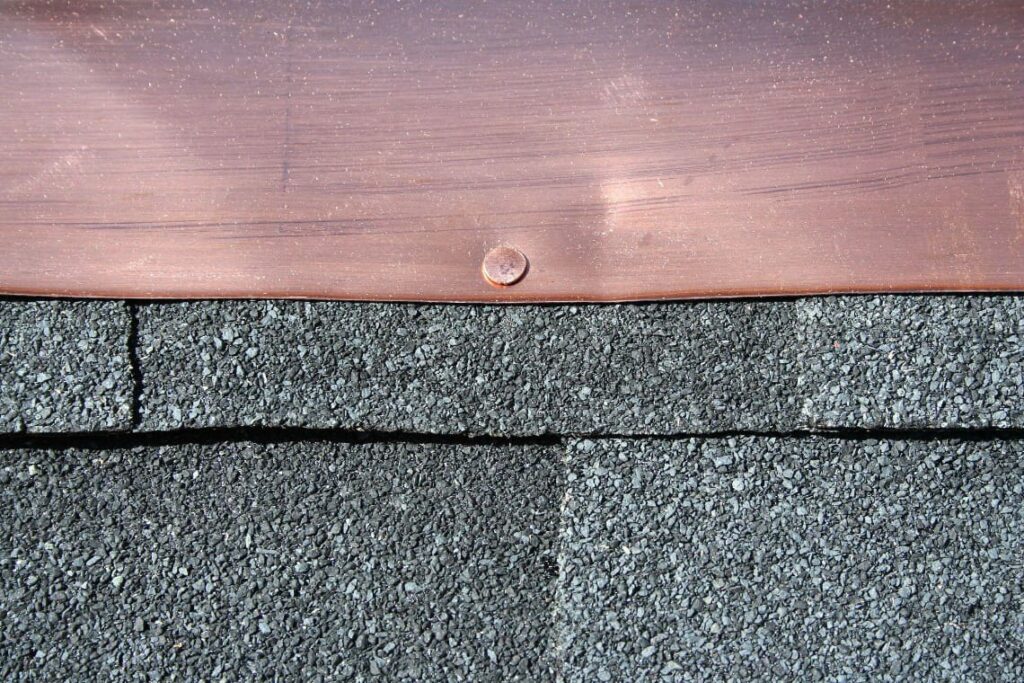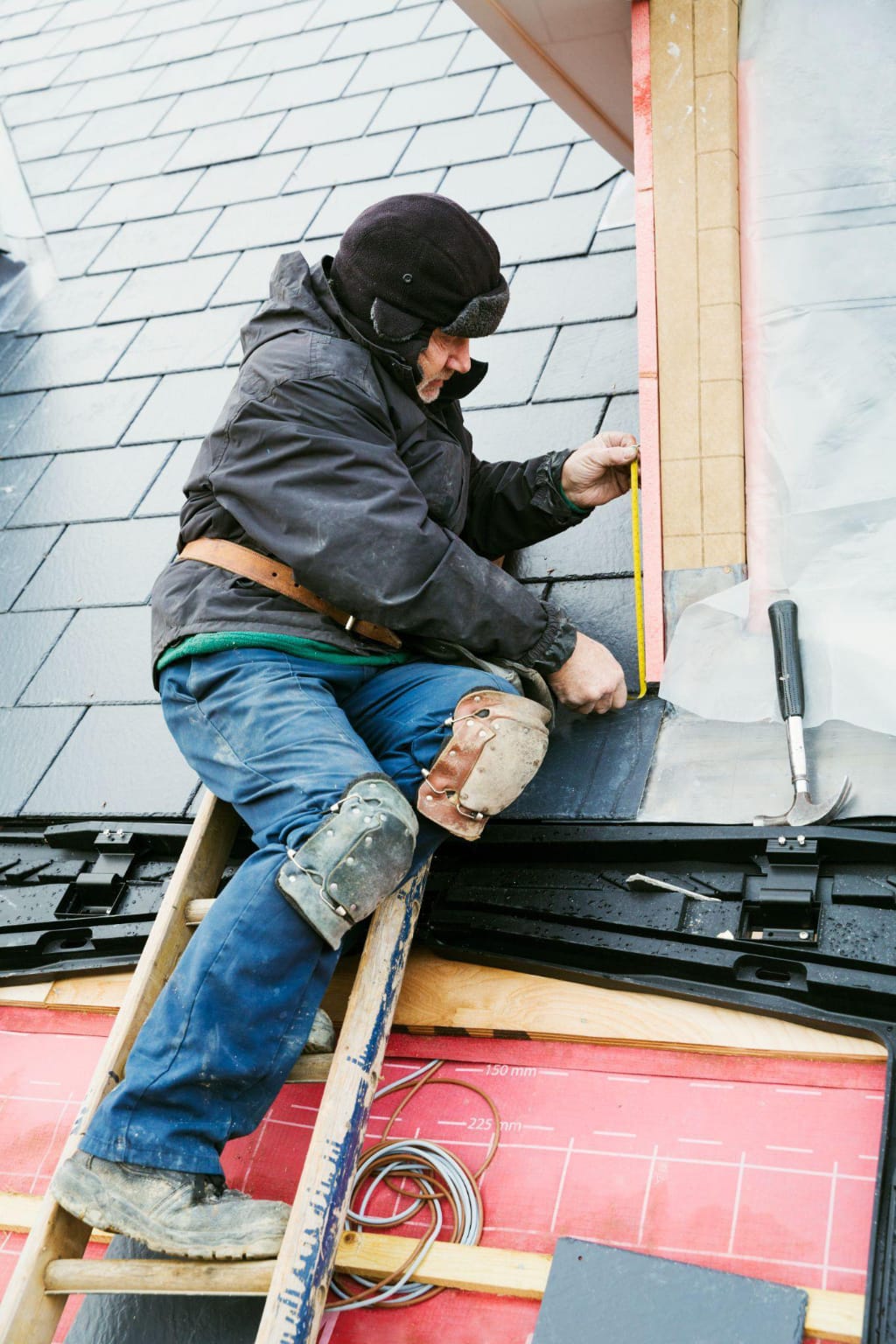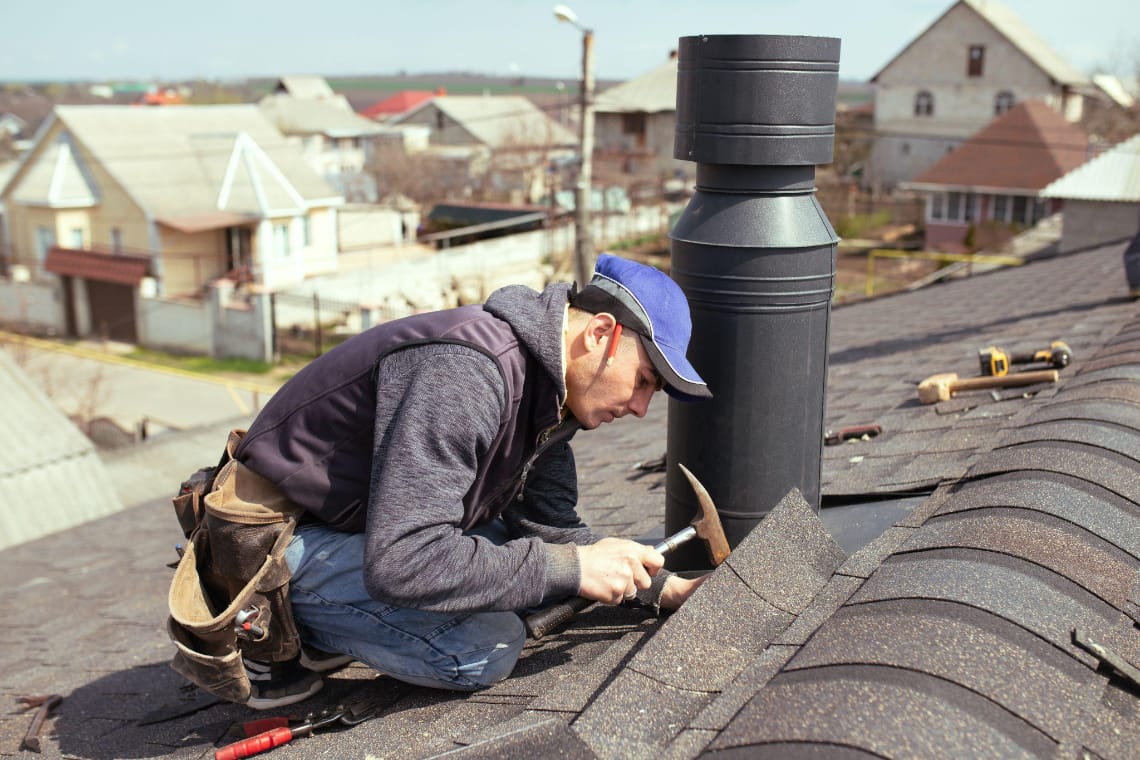
It comes as no surprise that the exterior of your home is one place where choosing the correct material for your environment is imperative to the longevity of your home.
Your roof is at the very top of this list. Living in Seattle WA, Portland, OR, Tacoma WA, Puyallup, and Snohomish County Washington leaves your home open to wet weather food the majority of the year. Choosing a roofing material that can withstand the elements is crucial. When it comes to your roof, shingles are often the first material that come to mind. Asphalt shingles are aesthetically pleasing, versatile, and can hold up to the weather fluctuations of the PNW. Shingles, though, are only part of the whole roof system. One material that is an absolute roofing must have is flashing.

What is Flashing?
Flashing is a thin layer of metal sheeting used to direct water away from seams and joints where moisture could penetrate the roof and cause water damage.
Your roof’s flashing is what protects the vulnerable areas of your home from leaks and other damage caused by moisture. This metal sheeting is installed at the intersections made by chimneys, sunlights, window openings, ventilation pipes, grooves, valleys, and other roof obstacles. Flashing is commonly made from the following materials: lead, aluminum, copper, stainless steel, plastic, rubber, and even impregnated paper. For questions, call us at 877-926-9966, or schedule a consultation with Guardian Roofing today »
So, What does Flashing do?
Flashing is essential to a properly functioning roof due to its protection against moisture. As the flashing diverts moisture away from the crevices, your roofing, insulation, and structure of your home remain dry. A roof without a properly installed flashing system is extremely susceptible to exposing a home to mold damage, as water can travel through and underneath openings in the roof if they are not appropriately sealed and protected.

Where is Flashing Needed on a Roof?
Properly installed flashing is essential to its performance. Poor installation could lead to roof deterioration, water penetration, and more long-term issues. Penetrations like chimneys, vents, and dormers are more complicated when it comes to flashing. Each requires a unique set of materials and installation techniques to provide a water-tight seal. For questions, call us at 877-926-9966, or schedule a consultation with Guardian Roofing today »
There are a few areas of your roof where flashing is necessary.
- Skylights:
If your roof has skylights, they are typically built in with raised wood curbs to make room for flashing. Skylight flashings are the first layer of protection against leaks and moisture Some skylights might already come with flashing built in. It’s important to know the difference and talk to your contractor before choosing the best skylight for your roof.Without properly installed skylight flashing on all of your roof’s skylights, your skylight could end up causing a variety of problems for your roof as well as it’s structure. Skylight flashings are what help guarantee that your skylight won’t leak, so without them, you risk water seepage, roof rot, corrosion, mold, and even structural damage to your home.
For questions, call us at 877-926-9966, or schedule a consultation with Guardian Roofing today »
- Chimneys:
Flashing needs to be installed around the base of the chimneys on your roof in several different parts. It’s important to seal up the area around your chimney to keep your interior dry. - Vents:
Flashing removes the possibility of water leaking in to your roofing system especially when you have hood or pipe vents. - Valleys:
On sloped roofs, flashing needs to be installed where two valleys meet. Metal valley flashing is usually installed over the underlayment, but under the edges of the shingles.This is where the two sloping roof planes meet and create an angle, which are notorious spots for water to penetrate unless flashing is properly installed. Valley flashing is visible from the ground. Some homeowners choose a unique color of valley flashing to add a striking contrast to the color of their shingles.
If you have further questions or would like to speak with one of our experienced contractors, schedule a consultation today. Our team of experts can give you even more information about this crucial component to your roofing systems, as well as make expert product recommendations.
The Importance of Periodic Roof Inspections
Since flashing covers vulnerable parts of a roofing system, it is imperative that you schedule regular inspections. By keeping flashing in good shape, you’ll help secure your roof against unwelcome water leaks more effectively. With quality installation and proper maintenance, your roof’s flashing can outlast your roofing saving you time and money on your next roof installation. In some cases, a roofer can correct a problem with loose flashing simply by re-attaching or replacing the flashing.
Stay on top of your roofing and flashing maintenance! It usually costs much less to replace damaged flashing than to fix leaks which have developed around exposed roof surfaces. Keeping your home’s flashing secure ultimately helps extend the lifespan of the roofing system. For questions, call us at 877-926-9966, or schedule a consultation with Guardian Roofing today »

